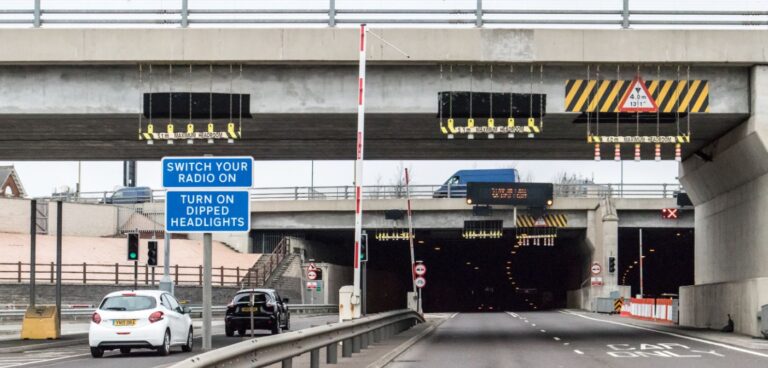Tyne Tunnel says a six-month review of changes to payment for crossings show both journey times and C02 emissions have been slashed.
The tunnels switched to a cashless, booth-free system in November 2021 and operator TT2 says the changes have had a positive impact for commuters.
Like other free-flow operations, cameras automatically register journeys and payment needs to be made before midnight the following day.
Since open-road tolling was launched, TT2 say they have seen more than 10.6 million journeys made and, during the first month, some 94.6% of drivers paid their toll on time, with that figure rising to 96.74% by May 2022.
On an average day, TT2 believes Northbound journeys are now 39 seconds faster and southbound trips 26 seconds quicker while claiming C02 emissions have reduced by 90%.
What’s more, the percentage of customers pre-paying for their journey has risen from 72% in November 2021 to almost 78% in May 2022.
Philip Smith, CEO of Tyne Tunnel, said: “We were fortunate to follow in the footsteps of open-road-tolling launches at the Dartford Tunnel and the Mersey Crossing, and we have benefitted significantly from many of the lessons they learned.
“Of course, there have been some bumps in the road because changing a tolling system that has been in operation for decades and one that handles 18 million journeys every year is a challenge. But we continue to listen to our customers and learn how we can do better.
“The fact that we now have almost 97% of drivers paying their toll without issue, is testament to the hard work of our team at TT2 and the strong partnership we have with our client, NECA.
“We anticipated an initial spike in unpaid toll charge notices (UTCNs) as people got used to a new system and way of paying. We are pleased to see the level of non-compliance steadily falling as people get used to the new system.”
According to Tyne Tunnel, the number of UTCNs being issued as a percentage of journeys made in the month are down from 5.39% in November 2021 to 3.26% in May 2022.





